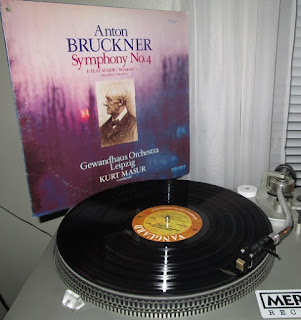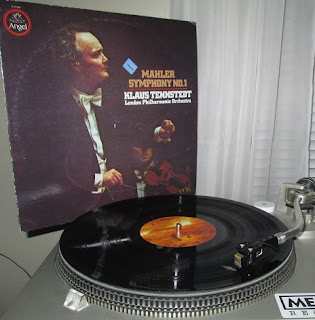Women labor activists over one hundred years ago issued an urgent and bold proclamation to the seemingly impenetrable forces of industry and government at the apex of the Gilded Age - "We want bread.......and roses too!" Rose Schneiderman, pictured above, is credited with first using the powerful couplet as a missive to call women (and all) workers to action demanding greater access to the fruits of the emergent industrial societies their toil gave birth to. While bread sustains the body, roses sustain the spirit. The gains of workers since that time - women and men - are well documented, starting particularly in the years of Roosevelt's New Deal and the decades that followed. Even in the so-called Post-Industrial Era, there are plenty of "roses" to indulge in, if the meaning of the word rests primarily upon the activities of the arts - film, music, literature, theater and the visual arts. If anything, there is probably too much to consume for the average working person. The arts have not abated in providing an avalanche of experiences for us all - uninterrupted since Rose Schneiderman's time to now.
Yet, it is possible to consider her "roses" to imply not simply the existence of the arts - for the arts have always been part of human experience - but also the TIME to "smell" the roses too. Leisure time. This concept, it may be safe to argue, has never been an accepted guarantee of human experience in any given society or age. If the Ancient Athenians had plenty of time to participate as citizens in the creation of their own laws, it is because a slave class did the toiling for them. Someone has to do "the work" while the rest swan around in robes making grand gestures. There may be those who gaze longingly back to such a time, yet one of the great contributions of modern times has been the work of people leading governments to repudiate the pernicious and vile condition of legal slavery. It is not a coincidence, of course, that the abolition movement, the women's suffrage movement and the rise of the labor movement all simultaneously launched from the exciting era of the Nineteenth Century. Intense times for the progressive and stubborn-willed leaders as well as the common foot-soldiers for change. Their bravery is our inspiration. For then, as now, we live in intense times. So-called populist leaders take advantage of economic and social unrest - conditions created due to the destabilizing effects of deregulated markets around the world. In desperate times, people want to believe in the empty promises of vulture capitalist demagogues. What evidence exists to illustrate the responsiveness of such figures to those who pledge their loyalty from afar? One can hear, if listening carefully, the sound of exclusive country club gates closing in a response of "THANKS!" for that support.
In the middle of all this, who has time for "roses" anyway? Indeed, the very utterance of this old and creaky couplet runs the risk of losing its currency precisely at a time when, seemingly, it ought to have its greatest rallying potential. Despite gains in the corporate shareholder world (to the usual benefit of the top earners / investors - as ever and always!) - wages have been flat since the 1970s. Even factoring in all the inexpensive consumer goods from global trade and the magic of the internet, are we really "better off" today? Oddly enough, since starting this blog about eight years ago more and more interest in vinyl record culture has emerged. Perhaps most of this renewed interest is reflected in the popular music that appeals to the 30-and-under crowd. Yet, as some folks have mentioned in their comments beneath my posts here, there seems to be a groundswell of interest in classical vinyl too. As I've suggested over the years - the quality and quantity of good music on vinyl - for very reasonable prices - may be at an all-time high for the analog-ready. Even decent quality turntables are quite affordable. How does all the analog messing around change the nature of the interaction with the art? Anyone with a cell phone can stream classical music for "free" as much as they like. Nothing wrong with that. The analog equipment makes the experience INCONVENIENT. At least for the average, post-industrial, multi-tasking, net-surfing, gig-economy juggling walking and popping humanoid.
Even if it's cheap, generally speaking, why would anybody today want to go through the trouble of being inconvenienced just to hear Beethoven's 9th Symphony? Wasn't that the piece chosen to represent the length of a standard compact disc back in the 80s? Isn't this blog post all about saving time - leisure time?? And how about space? Who out there, living in their tiny houses, can afford the shelf space for a bunch of bourgeoisie plastic waffles? Well, they sure won't be bringing home a full-sized piano from the local Salvation Army either. Last time I went looking for records at the SALVO I saw a very nice upright piano for $150. That's a steal in some ways - but certainly a major INCONVENIENCE! Just as the cell phone puts the turntable out to pasture, so did the radio do the same to the piano itself - once the standard music-loving-household's pride and joy. And what are we missing? Singalongs around the piano with Aunt Gladys on Thanksgiving? Or something else........
I don't quite have the gumption to drag the piano home just yet. But if given half a chance I would. When I was in college, I was trying to learn some piano with lackluster results. I really did give it a go for a time before giving it the "shrug of defeat". I even was visited by Dizzy Gillespie in dream! About the time I decided to give up on piano playing I had a dream where I was sitting at a piano and Dizzy Gillespie was sitting on the bench next to me at the piano and he was gently berating me for "giving up" - what the hell?!? Was he even still alive when I had that dream? And why Dizzy? Did he ever play piano even a little? I still don't know. Sometimes I wonder if I should have toughed it out. Maybe it isn't too late? Hmmmmmm.....
In the meantime I keep stretching my listening with more music. Here are some platters that have kept me inconvenienced since the last entry.........
Really enjoyed this reissue of Walter Gieseking playing some Debussy piano music. I think at a certain point Gieseking was considered one of the foremost interpreters of Debussy's stuff. I have yet to hear a recording from him that I don't like so he's always fair game. Not sure if I have other recordings of his Debussy though.
I know this sounds a bit silly, but I felt somewhat accomplished when I finally listened to this 3 LP box set of Liszt's Christus. I bagged it for $1 a long time ago when I was on my Liszt kick and never got around to playing it. Much to my surprise and delight - most of it was instrumental music. Not that I dislike choral music - it just isn't usually my first pick for listening sessions. And, apart from the enjoyment I get from writing, when it comes to music I'm just not a word guy. Go figure.
These modern music records got played awhile ago, but I don't remember them honestly. Need to pull them out again. I don't think the music was obnoxious or abrasive - certainly would have remembered that. Not to say that modern music isn't good if it isn't memorable, though some folks might feel that way. For me it just means I need to give it another shot before I make a judgement. At least with music it is relatively safe to extend a second chance. Not always so easy in other parts of life, alas!
The Terry Riley and Ravi Shankar / Yehudi Menhuin albums seem to go together in a way - the modern minimalism and the ancient Indian Classical traditions compliment each other. Only a few weeks ago I had one of the best concert experiences of my life attending an Indian music concert. I will write more about that another time since I am still digesting the experience and considering how to write most effectively about it. It certainly re-affirmed my belief that live music can be a transcendent experience. Records are nice too, though!
As usual there is never a time that isn't right for some Julian Bream. I scored the record above most recently though I need to run it through the glue regimen one more time. I love the modern stuff as well as the medieval stuff he does.
Favorite piano records - I still have some Edith Farnadi albums I have to get into, she was quite something on that Liszt material. The big recent surprise for me was this Artur Balsam recording of Haydn Piano Sonatas. I'd never heard of Balsam before, yet his playing had a precision and fire going on that got my attention! I'm on the lookout for more from him. I love new discoveries like this. Ah, piano!
A couple of new-to-me Bruckner 4ths. The above version was really enjoyable - good sounding recording and performance. Unfortunately the record was a little scuffy in spots so I'll be looking to upgrade. The Bruno Walter version below was an interesting reading, but the sound was a bit on the shrill side. That can be the case with Columbia product, unfortunately. That's what tone controls are for. Dial back on that treble and you're almost there!
Some oboe music! Just hits the spot for me. What can I tell you? Being immersed in the music sure beats reality. Though I realize how fortunate I am to be able to do that. Honestly music has always been my escape hatch to counter the harshness of reality. Even when things are good - especially when things are not. I am thankful for the "roses" and the time to smell them. If I keep up what I do, maybe others might be able to have more of that too. I may not have had much time to write lately yet the message remains the same - check out some other vibrations if you can. And keep a light in the window. Until next time.......peace!















































